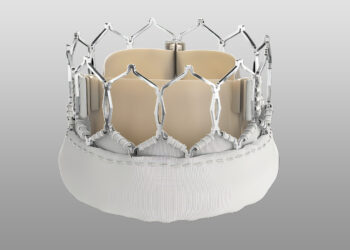[ad_1]
TOPLINE:
A 24-week phase 3 trial has found that once-daily vanzacaftor-tezacaftor-deutivacaftor is generally safe and well tolerated in children with cystic fibrosis aged 6-11 years. The treatment maintains normal baseline lung function while improving cystic fibrosis transmembrane conductance regulator (CFTR) function.
METHODOLOGY:
- Researchers conducted a phase 3 trial across 33 clinical sites in eight countries to evaluate the safety and efficacy of once-daily vanzacaftor-tezacaftor-deutivacaftor in children with cystic fibrosis aged 6-11 years.
- A total of 78 children (median age, 9.3 years; 44% girls; 91% White) with a confirmed diagnosis of cystic fibrosis were enrolled. All participants had at least one elexacaftor-tezacaftor-ivacaftor─responsive CFTR variant and forced expiratory volume in 1 second (FEV1 %) predicted of ≥ 60%.
- Children were either already on the elexacaftor-tezacaftor-ivacaftor regime for at least 28 days or underwent a 4-week run-in period with the same regimen.
- Following this, children weighing ≤ 40 kg received once-daily vanzacaftor (12 mg), tezacaftor (60 mg), and deutivacaftor (150 mg), while those weighing ≥ 40 kg received once-daily vanzacaftor (20 mg), tezacaftor (100 mg), and deutivacaftor (250 mg) for 24 weeks.
- The primary endpoints were safety and tolerability, while secondary endpoints included efficacy assessed as changes in sweat chloride concentration, FEV1 % predicted, and Cystic Fibrosis Questionnaire-Revised respiratory domain scores.
TAKEAWAY:
- Overall, 75 children experienced at least one adverse event, the majority of which were mild or moderate in severity. Serious adverse events occurred in six children, of whom two children had infective pulmonary exacerbation of cystic fibrosis.
- One participant discontinued the regimen due to cough and fatigue possibly related to the treatment. No deaths were reported.
- Sweat chloride concentrations improved (least squares mean absolute change, −8.6 mmol/L; 95% CI, −11.0 to −6.3). By week 24, more participants achieved levels below 60 mmol/L (94.9% vs 84.4%) and 30 mmol/L (52.6% vs 39.0%) than at baseline.
- The FEV1 % was maintained throughout the study without major changes, and the Cystic Fibrosis Questionnaire-Revised respiratory domain score also improved through week 24.
IN PRACTICE:
“Once-daily treatment has the potential for reduced treatment burden and improved adherence, which might lead to better clinical outcomes in people with cystic fibrosis,” the authors wrote.
SOURCE:
The study was led by Jordana E. Hoppe, University of Colorado School of Medicine and Children’s Hospital Colorado, Aurora, Colorado. It was published online on January 2, 2025, in The Lancet Respiratory Medicine.
LIMITATIONS:
The study’s open-label design limited direct comparisons of safety and efficacy between vanzacaftor-tezacaftor-deutivacaftor and placebo or elexacaftor-tezacaftor-ivacaftor. As the primary focus was on safety and tolerability, the study did not yield statistically significant changes in efficacy endpoints. Furthermore, the study only included children who could tolerate elexacaftor-tezacaftor-ivacaftor, excluding those who couldn’t tolerate this combination.
DISCLOSURES:
The study was funded by Vertex Pharmaceuticals, with four authors being employees of the company. Several authors reported receiving grants, consulting fees, travel support, and monitoring or advisory board fees from various organizations and pharmaceutical organizations.
This article was created using several editorial tools, including AI, as part of the process. Human editors reviewed this content before publication.
[ad_2]
Source link : https://www.medscape.com/viewarticle/novel-triple-combination-therapy-may-transform-cystic-2025a1000450?src=rss
Author :
Publish date : 2025-02-18 09:47:04
Copyright for syndicated content belongs to the linked Source.














